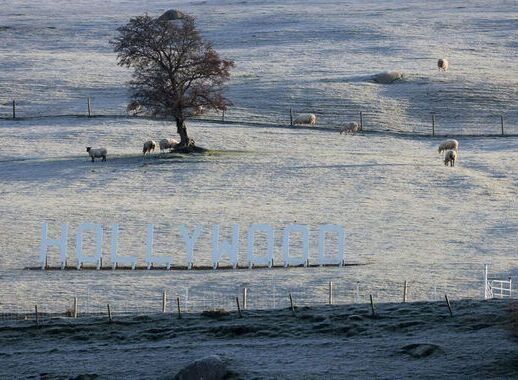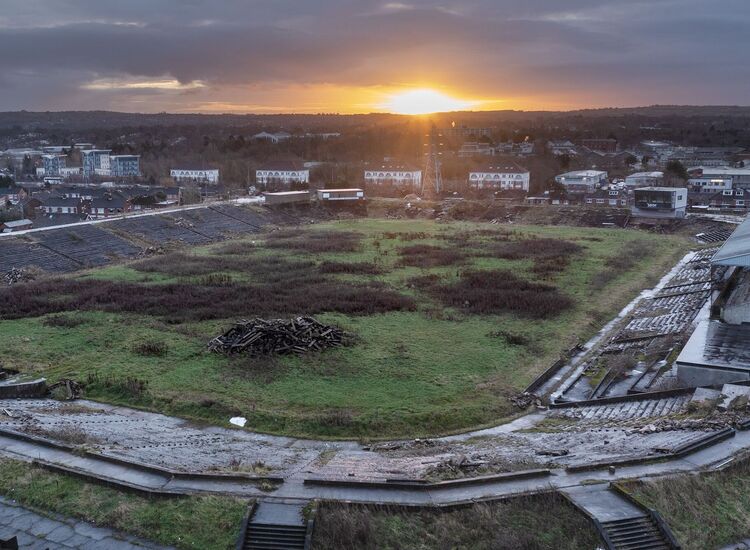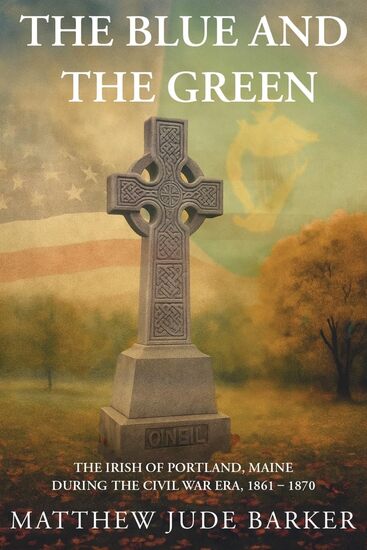The official Route 66 sign from 1926 until 1948.
Screen Time / By Peter McDermott
Using the Biblical three score and 10, you could say that 35 years is half a lifetime. And if you want to be transported back, just go to YouTube, key in “Route 66” and “1985” and you will be, via a 1-hour, 42-minute documentary from musician and filmmaker John T. Davis.
He got to travel the 2,448-mile road from Chicago to L.A., just in time. For Route 66 was taken out of the U.S. highway system in 1985, after a 59-year run. And while that history gets its due — Studs Terkel is heard, for example, reading extracts from “The Grapes of Wrath” — the aim mainly is to paint a portrait of America half-way through the Reagan era.
Freddie Johnson is interviewed driving the Greyhound bus leaving Chicago destined for L.A. When he was one of the first black drivers recruited 20 years before, the veterans told him that in the old days it took a week via Route 66, which Freddie says was surely better than walking.
He regrets that that the L.A. journey bypasses the old cities and towns. For Freddie, it’s a metaphor: “The little man’s been forgotten.”
Amy Thompson has been on “66 Highway since 1928.” She recalls a time when 50 cents was a good price for a night’s rest and also when she and her brothers would sell things along the side of the highway.
“It used to called the Main Street of America. I guess it still is. To some people,” Amy says.
But her stretch of 66 was bypassed in ’54 and she couldn’t stop the traffic.
Route 66 began in 1926, and much of it was gravel or graded dirt for a long time. But in 1938, it became the first fully paved highway in America. By the early 1950s, however, progress was outpacing it. A fix sometimes meant going around it; finally President Eisenhower’s 1956 Interstate Highway Act proved to its ultimate undoing. I-40, which starts out in North Carolina, is the enemy here. It subsumed parts of 66, but mostly bypassed it.
Davis’s journey takes us through cities and hamlets, to bars, clubs, and places of worship. Along the way we hear from marginalized Native Americans and from Mexicans with dreams of upward mobility. The perspectives of young women are front and center. And there’s music, lots of it. The pro-Reagan voices meantime come, as with some of the music, from various points along the radio dial, and from a right-wing pawn-broker in Amarillo.
The political divisions of 21st America aren’t so obvious. In the rural Midwest, they feel the farmer is misunderstood. “Reagan is just a Hollywood boy, as far as we’re concerned,” says one interviewee.
Davis is a Holywood boy, too, having been born in the one in County Down in 1947. He’s admired greatly back home. Queen’s Film Theatre did a retrospective of his work to mark his 70th birthday. An essay on the Culture Northern Ireland website says he is “internationally recognized as Northern Ireland’s most distinctive documentary filmmaker and cinematographer.”
Davis had a chance encounter in a Belfast street with American filmmaker DA Pennebaker, when he was making his Bob Dylan documentary “Don't Look Back” in 1966. He knew straightaway that filmmaking “was such a cool thing to do. It was rock 'n' roll and it was for me.”
He already had a connection to the art form through his uncle, Jack McBride Neill, who designed beautiful cinemas in Northern Ireland in the 1930s and ‘40s and whose story was the subject of his 1996 film “The Uncle Jack.”
Davis inherited his uncle’s old 8mm camera upon his death in 1974, which led him to make a trilogy of films, beginning with “Shell Shock Rock,” in which “he captured the attitude of northern punk exponents like Stiff Little Fingers, the Undertones and the Outcasts.”
The essay continues, “Davis began to focus on what was to be a recurring theme of his work, American culture and sub-cultures.
“His experiences in America's 'Bible-Belt' were to resonate in his encounters with fundamentalist religion in Northern Ireland with the films ‘Dust On The Bible’ (1989) and ‘Power In The Blood’ (1989).”
Davis wasn’t quite done with the road. In 1991, he made “Hobo,” which we are told is “generally considered to be his finest work.” It follows the exploits of Beargrease as he traverses America.
Davis jumped trains, too, and scavenged for food during the making of his film about Beargrease, the hobo of the title.
"Route 66" can be viewed here, and “Hobo” is available here.








